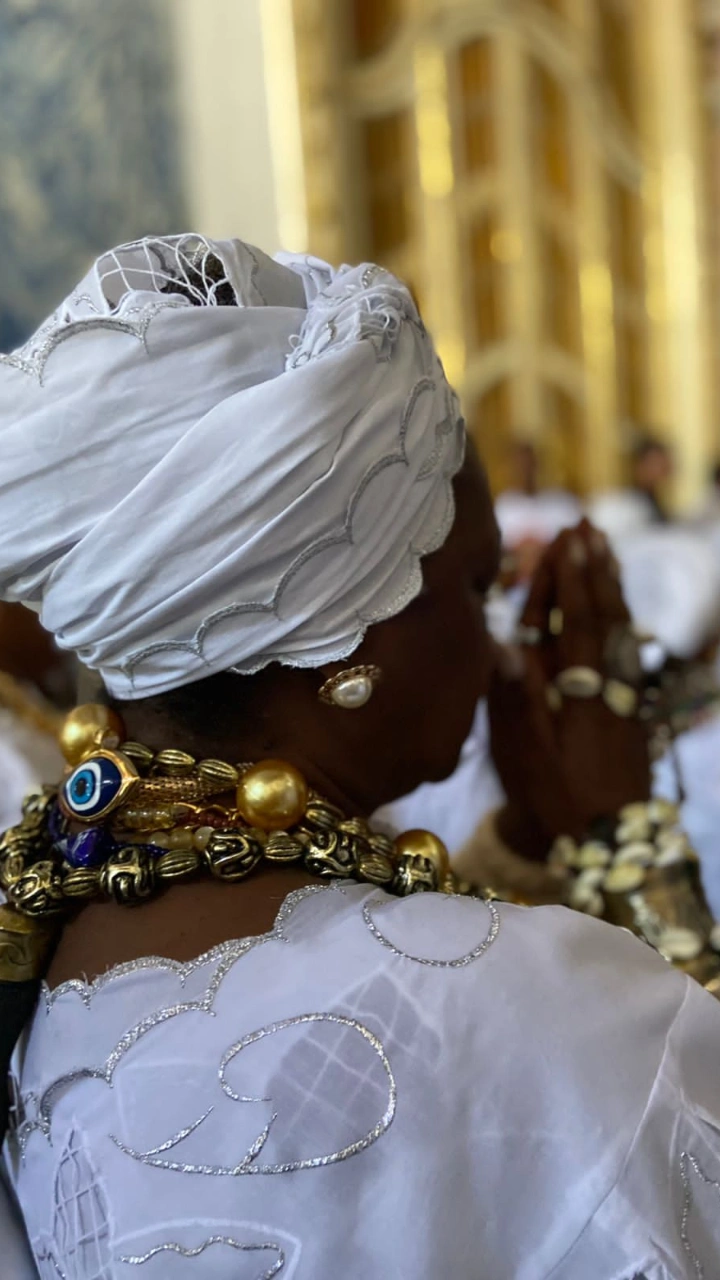Why Brazil should be on every Black Traveler's list
- Carina Santos

- 31 de out. de 2024
- 4 min de leitura
Atualizado: 27 de dez. de 2024
Brazil vibrant destination filled with rich culture, history, and diversity, making it an appealing choice for Black travel. Here are several reasons why Brazil should be on the list:

Historical Context: Brazil was the largest importer of African slaved during the transatlantic slave trade, with millions of Africans brought to the country from the 16th to the 19th centuries. This historical context laid the foundation its unique identity. Understanding this background can provide meaningful insights into the resilience and contributions of Afro-Brazilian communities.
5 Afro-Brazilian Cities You Need to Visit
Salvador: African heritage, music, food, and religious traditions (Candomblé)
Rio de Janeiro: Little Africa, Samba schools, and Afro-Brazilian art
São Paulo: Museu Afro Brasil and the city’s Black cultural events
São Luis do Maranhão: maroon communities, food, music.
Ouro Preto: African Heritage, Gold Mines History, Galanga Chico Rei;
Cultural Syncretism: The blending of African cultures with indigenous and European influences has given rise to a vibrant and diverse cultural scene in Brazil. This is evident in religions, musical genres, food, and customs, with practices such as Candomblé and Umbanda showcasing African spiritual influences alongside indigenous and Catholic elements.
5 cultural experiences you can live in Brazil:
capoeira: capoeira is an Afro-Brazilian martial art that combines elements of dance, acrobatics, music, and spirituality. It was developed by African slaves in Brazil during the 16th century as a way to practice self-defense while disguising it as dance, since martial arts were forbidden by the slave masters. Practitioners, known as capoeiristas, move fluidly in a circle called a roda, accompanied by traditional Brazilian music, including instruments like the berimbau, atabaque, and pandeiro.
candomblé: originated with the African people who were brought to Brazil, primarily from West Africa, particularly Nigeria, Benin, and Ghana. It developed in the 19th century, particularly in Salvador da Bahia. Candomblé is centered around the worship of orixás, which are deities that represent natural forces and elements and are linked to African ancestral traditions. Each orixá has specific characteristics, symbols, and elements associated with them. For example, Ogun is the god of iron and war, while Yemanjá is the goddess of the sea and motherhood.
samba: Samba is a lively Brazilian dance and musical genre with African roots, celebrated as one of the defining cultural symbols of Brazil. Originating from Afro-Brazilian communities in Bahia and later flourishing in Rio de Janeiro in the early 20th century, samba combines vibrant rhythms, intricate footwork, and powerful percussion. The music typically includes instruments like the pandeiro (tambourine), cavaquinho (a small guitar), surdo (bass drum), and tamborim (a small drum).
What if the film "Eat, Pray, Love" had been set in Brazil? If instead of traveling to Italy, India, and Bali, you embark on a journey through Brazil, exploring the rich cultural tapestry of Afro-Brazilian communities, the itinerary would be like this:
Eat: The African diaspora has greatly influenced Brazilian cuisine, with dishes like acarajé and moqueca featuring African ingredients and cooking techniques. These foods are not just staples but also a means of cultural expression and identity. Key Cities: Salvador, Ouro Preto or Belém do Pará.
Pray: delve into the intricate Afro-Brazilian religions like Candomblé and Umbanda, Connect with a local healer or spiritual leader, gaining insights into self-love and spiritual connection. Key cities: Salvador da Bahia or Rio de Janeiro
Love: Brazilian culture is known for its warmth and friendliness, making it easier for travelers to feel welcomed and at home. This hospitality can enrich the overall travel experience. Key cities: Rio de Janeiro, Recife, São Luis do Maranhão.
Black is beautiful: Afro-Brazilian fashion and hairstyles have long been a powerful expression of cultural identity, resistance, and beauty. Rooted in the rich heritage of Africans brought to Brazil, these styles have evolved over centuries to reflect the unique experiences and creativity of Afro-Brazilians.
Natural Hair: Afro-Brazilian hairstyles often celebrate natural hair textures, including kinky, curly, and coily hair. This is a significant departure from the Eurocentric beauty standards that have historically marginalized natural hair.
African-Inspired Designs: Many Afro-Brazilian hairstyles incorporate traditional African braiding techniques, beadwork, and adornments. These elements serve as a connection to the ancestral homeland and a celebration of African culture.
Bold Colors and Patterns: Afro-Brazilian fashion is often characterized by vibrant colors, bold patterns, and intricate details. These elements reflect the joy, creativity, and resilience of the Afro-Brazilian community.
Political and Social Significance: Afro-Brazilian fashion and hairstyles have played a crucial role in political and social movements. They have been used to challenge stereotypes, promote racial equality, and empower Afro-Brazilians.
3 Festivals Celebrating Black Money in Brazil
Feira Preta: This annual fair happens in São Paulo, is dedicated to showcasing Black-owned businesses and entrepreneurs. It features a variety of products, including clothing, accessories, food, and art;
Future in Black: The largest connections conference for black decision makers in Latin America, happens in differet cities;
Afrofuturismo: Lectures, conversation circles, artistic and cultural presentations are some of the activities that will make up the program in Salvador da Bahia.





















Comentários